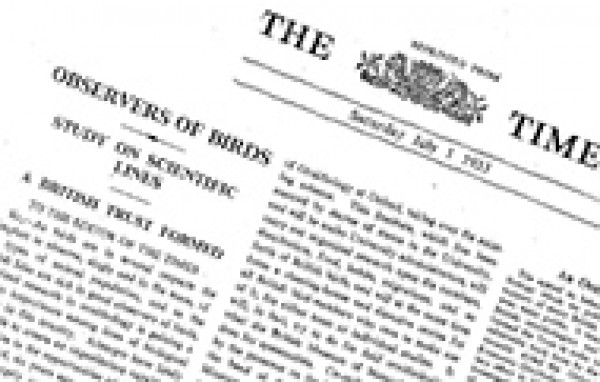It started with a letter
01 Jul 2013
Monday, 1 July 2013 marks the eightieth anniversary of the British Trust for Ornithology. On the same date, in 1933, a letter was published in The Times, announcing the foundation of the BTO, the simple aim of which was better to understand the birds of these islands. Eminent birdwatchers of the day, including Lord Grey of Fallodon, the former Foreign Secretary, asked for support from subscribers so that the new Institute could raise £8,000 (in a recession) to underpin the first five years of its work. The appeal worked and today the BTO is celebrating its eightieth birthday.
In a commentary from the Editor, Geoffrey Dawson, there was a robust endorsement of the letter:
“In these studies, indeed, Great Britain might lead the world since its area is not so large as to impede coordination, and the number of keen and competent observers is larger than in any other country. With sufficient support, the Institute should soon be in a position to regularly furnish the Ministry of Agriculture and the Natural History Museum with data of high economic and scientific value”.
The Editor was right but he and the signatories of the 1933 letter could not have conceived how BTO data would be used. Amongst other things, we have published national atlases, provided evidence of climate change (through the advancement of breeding seasons), advised on major planning proposals and helped to formulate farm payment plans, to support birds such as Skylark. Through ringing, we have followed British birds such as Arctic Tern, Manx Shearwater, Swallow, Tufted Duck and Knot to Australia, Brazil, South Africa, Siberia and Canada, and we can now use satellites to plot the day-to-day movements of Cuckoos. The BTO has been a national and international success; we are grateful to The Times for the far-sighted endorsement of the appeal of eighty years ago. We hope that birdwatchers will continue to support us for many years to come.






Share this page